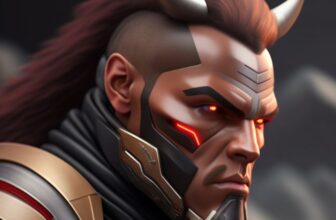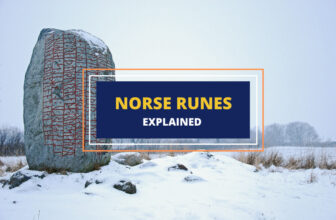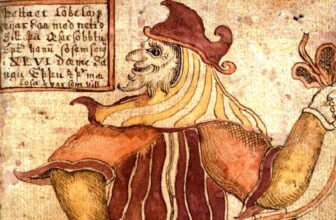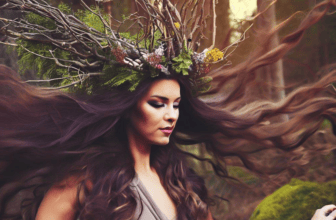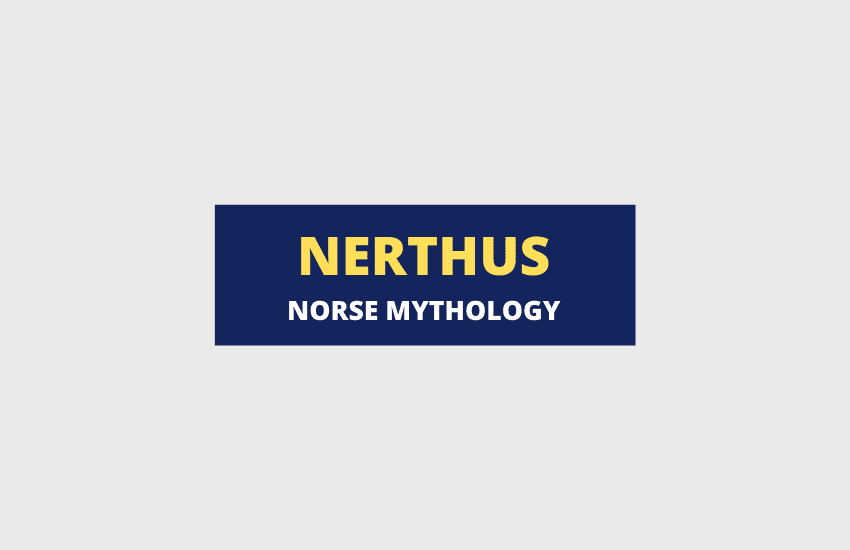
Table of Contents
Nerthus – is she yet another Norse goddess of the Earth or is she something truly special? And if it’s both, maybe Nerthus can help explain why there are so many seemingly duplicated Norse deities.
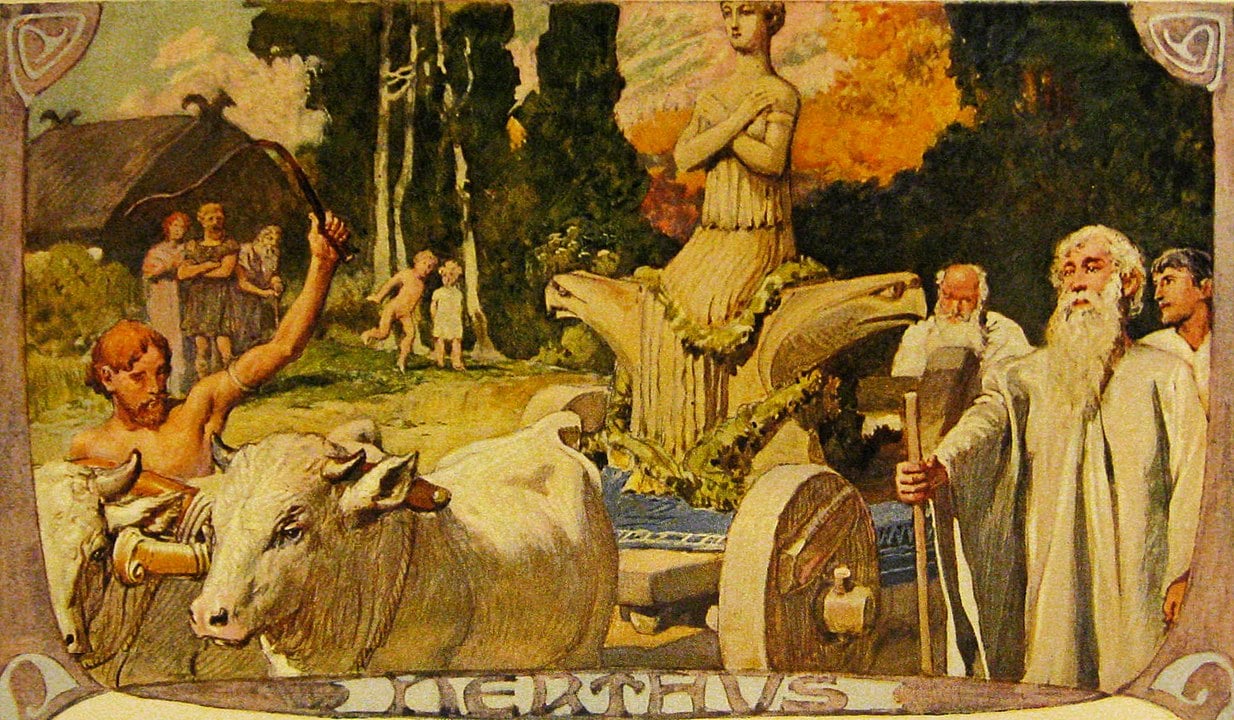
Who is Nerthus?
Nerthus is one of the more prominent Proto-Germanic deities that the Roman Empire encountered during its attempts at conquering the continent. Nerthus is thoroughly described by the Roman historian Tacitus around 100 BCE but aside from his account, the rest is up for interpretation.
Tacitus’ Account of the Worship of Nerthus
As the Roman legions kept marching through Northern Europe, they encountered dozens if not hundreds of warring Germanic tribes. Thanks to them – the Roman legions – we now have a somewhat detailed account of what many of these tribes worshipped and how their beliefs were connected.
Enter Tacitus and his description of Nerthus.
According to the Roman historian, several prominent Germanic tribes worshipped a goddess of the Mother Earth named Nerthus. One of the several special things about that goddess was a particular peace ritual.
Tacitus details how these Germanic tribes believed Nerthus rode on a chariot drawn by cows, riding from tribe to tribe, bringing peace along with her. As the goddess rode through Northern Europe, peace followed, and the tribes were forbidden from warring with each other. Days of marry-making and rejoicing followed the goddess and every iron object was locked away.
Once peace was achieved, Nerthus’ priests brought her chariot, her vestment, and the goddess herself – body, flesh, and all – to her home on an island in the Northern Sea. Once there, the goddess was cleansed in a lake by her priests with the help of their slaves. Unfortunately for the latter, the slaves were then killed so that other mortal men could never learn of Nerthus’ secret rituals.
Here is a translation by J. B. Rives of Tacitus’ Germania, which details the worship of Nerthus.
“After them come the Reudingi, Aviones, Anglii, Varini, Eudoses, Suarini and Nuitones, behind their ramparts of rivers and woods. There is nothing noteworthy about these peoples individually, but they are distinguished by a common worship of Nerthus, or Mother Earth. They believe that she interests herself in human affairs and rides among their peoples. In an island of the Ocean stands a sacred grove, and in the grove a consecrated cart, draped with cloth, which none but the priest may touch. The priest perceives the presence of the goddess in this holy of holies and attends her, in deepest reverence, as her cart is drawn by heifers. Then follow days of rejoicing and merry-making in every place that she designs to visit and be entertained. No one goes to war, no one takes up arms; every object of iron is locked away; then, and only then, are peace and quiet known and loved, until the priest again restores the goddess to her temple, when she has had her fill of human company. After that the cart, the cloth and, if you care to believe it, the goddess herself are washed in clean in a secluded lake. This service is performed by slaves who are immediately afterwards drowned in the lake. Thus mystery begets terror and pious reluctance to ask what the sight can be that only those doomed to die may see.”
How does this Proto-Germanic deity related to the Norse pantheon of gods? Well, in a rather speculative, curious, and incestuous way.
One of the Vanir Gods
When thinking about Norse gods, most of us imagine the Æsir/Aesir/Asgardian pantheon of gods led by the Allfather Odin, his wife Frigg, and the god of thunder Thor.
What most people skip, however, is the entire second pantheon of deities called the Vanir gods. The confusion comes because the two pantheons eventually merged after the Vanir-Æsir War. Prior to the war, these were two separate sets of gods. What distinguished the two pantheons were a couple of factors:
- The Vanir gods were predominantly peaceful deities, devoted to fertility, wealth, and farming while the Æsir gods were more war-like and militant.
- The Vanir gods were mostly worshipped in Northern Scandinavia while the Æsir were worshipped all throughout Northern Europe and the Germanic tribes. Nevertheless, both the Vanir and the Æsir seem to have been based on the even older Prot-Germanic gods.
The three most prominent Vanir deities are the god of the sea Njord and his two children, the twin gods of fertility from an unnamed mother – Freyr and Freyja.
So, what does Nerthus has to do with the Vanir pantheon of gods?
Seemingly, nothing. That’s why she’s not technically added to the Njord-Freyr-Freyja family. However, many scholars speculate that Nerthus might be the unnamed mother of the fertility twins. There are several reasons for this:
- Nerthus clearly fits the Vanir profile – a fertility Earth goddess that walks around the land and brings peace and fertility with her. Nerthus is not a war-like deity like most Norse Æsir or Proto-Germanic gods and instead aims to bring peace and calm to her subjects.
- As an Earth goddess, Nerthus is a likely pair for Njord – the Vanir god of the sea. Most ancient cultures, including the Norse, paired Earth and Sea (or Earth and Sky) deities together. Especially in sea-faring cultures like the Norse and the Vikings, the pairing of Sea and Earth typically meant fertility and wealth.
- There’s also the linguistic similarities between Nerthus and Njord. Many linguistic scholars speculate that the Old Norse name Njord is the exact equivalent for the Proto-Germanic name Nertus, i.e. the two names translate into each other. This fits the myth that the twins Freyr and Freyja were born by the union between Njord and his own unnamed twin sister.
Nerthus, Njord, and the Vanir incestuous tradition
The Vanir-Æsir War is its own long and fascinating story but after its end, the Vanir and Æsir pantheons were combined. What’s fascinating about these merger is that the two pantheons didn’t just include several different names and deities, but also lots of different and clashing traditions.
One such “tradition” seems to be that of incestuous relationships. There are only a few Vanir deities we know of today but most of them have recorded incestuous relationships with each other.
- Freyr, the male twin god of fertility got married to the giantess/jötunn Gerðr after the Vanir/Æsir merger but before that he’s known to have had a sexual relationship with his twin sister Freyja.
- Freyja herself was the wife of Óðr but she’s also the lover of her brother Freyr.
- And then, there’s the god of the sea Njord who married Skadi after joining the Æsir pantheon but before that fathered Freyja and Freyr with his own unnamed sister – likely, the goddess Nerthus.
Why was Nerthus Not Included in the Norse Pantheon?
If Nerthus was Njord’s sister, why wasn’t she “invited” into Asgard with the rest of the family after the Vanir-Æsir War? In fact, even if she wasn’t Njord’s sister at all, why wasn’t she incorporated into the Norse pantheon anyway with the rest of the ancient Scandinavian and Proto-Germanic deities?
The answer, most likely, is that there already were several “female Earth deities” in Norse mythology and Nerthus was just left behind by the bards and poets who “recorded” the ancient Norse myths and legends.
- Jörð, Thor’s mother, was the “OG” Earth goddess, speculated to be both Odin’s sister and sexual partner by some sources and an ancient giantess/jötunn by others.
- Sif is Thor’s wife and another major Earth goddess worshipped across ancient Northern Europe. She’s also viewed as a fertility goddess and her long, golden hair was associated with rich, growing wheat.
- Idun, the rejuvenation, youth, and spring goddess who gave the gods the literal fruits of their immortality, is also associated with the land’s fruits and fertility.
- And, of course, Freyr and Freyja are also fertility deities – both in sexual and in farming context – and are therefore associated with the Earth and its fruits.
With such stiff competition, it’s very likely that Nerthus’ myth simply didn’t survive through the ages. Ancient religions and mythology survived on a village-by-village basis with most communities believing in most gods but worshipping one in particular. So, given that all communities knew or worshipped other Earth, peace, and fertility deities already, Nerthus was likely just left aside.
Symbolism of Nerthus
Even though this Earth goddess was left behind by history, her heritage remained. Freyja and Freyr are two of the most prominent and unique Norse deities and even if Nerthus wasn’t their mother after all she was definitely a prominent goddess of peace and fertility in her day, disproving the narrative that the ancient Germanic tribes only cared about war and bloodshed.
Importance of Nerthus in Modern Culture
Unfortunately, as a truly ancient Proto-Germanic deity, Nerthus isn’t really represented in modern culture and literature. There is a minor planet called 601 Nerthus as well as several European football/soccer teams named after the goddess (with varying spellings) but that’s about it.
Wrapping Up
Nerthus remains a somewhat enigmatic figure of Norse mythology, one who is the subject of much speculation. However, it’s highly likely that she was a Vanir goddess whose myths and worship eventually declined.




